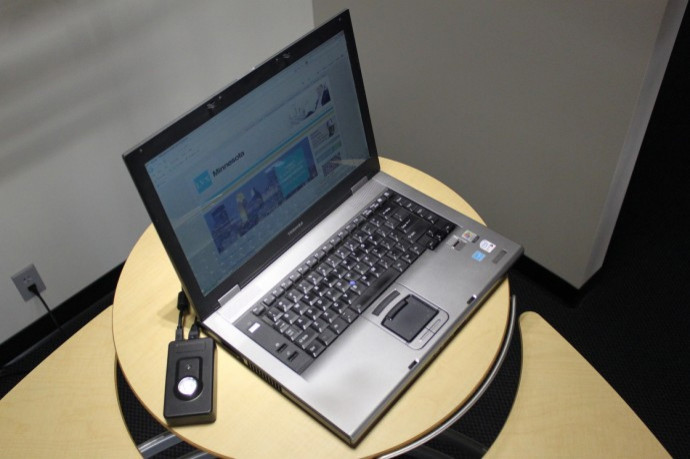LEDs Become Wireless LANs

A Minnesota start-up has designed a way to build a wireless network using only light.
St. Cloud-based LVX System is a company has invented an array of light emitting diodes that changes its frequency and brightness hundreds of thousands of times every second. It works in almost exactly the same way that fiber optic systems do, except the sender and receiver aren't connected by a cable.
In a fiber optic system, the wavelength and the intensity of the light is changed many thousands of times per second, far faster than the human eye can pick up. The difference in the light's brightness is also too small to see. But a transceiver can pick it up and use it to transmit data. Wireless Internet connections work in a similar way, as small changes in the signal transmit data (and if one were to listen in on analog equipment, the signal would sound like static).
One of the big advantages, says David Sexton, vice president of sales, is that unlike radio frequency Wi-Fi systems, visible light doesn't leak away from the area you want it to go -- it is only receivable in the line of sight. Radio waves, by contrast, bend around corners (a process called diffraction) which is why they are very useful in areas where you need wide area coverage, but they are much less secure. With visible light, a passer-by could not try to eavesdrop through an open window, because the glass refracts the light and distorts the signal. Even a relatively un-secured network would be inaccessible to anyone not under the lights.
One of the groups interested in the system is a police department, Sexton says, where the visible light means that only people in the building will be able to access the network.
Another plus is the ability to set the lights up using ordinary power connections. There are no special wires to install, and the lights can double as ordinary lighting. This reduces the number of cables that one needs to string around a building to set up a LAN.
An added bonus is a reduction in energy use. Since the lights double as illumination, the power used in both routers and lights is greatly reduced, because LEDs use less energy than conventional fluorescent or incandescent lights.
As for the speed, Sexton says he can't be specific because the technology is improving rapidly, but he says right now data rates are comparable to ordinary LANs and DSL connections when there are lots of people on the network. That will get better, he says, as the software improves.
© Copyright IBTimes 2025. All rights reserved.



















